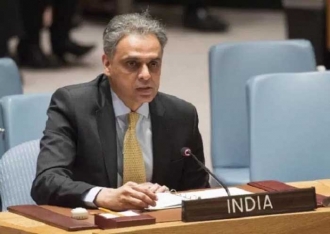Dehlvi: Sadia the woman and the myth!
Be the Voice of the Free Press…Like, Share, follow, subscribe
By Nazrul Islam, Copy Edited by Adam Rizvi, New York, TIO: Literature is the neuter, that composite, that oblique into which every subject escapes. And, is also the trap where all identity is lost, beginning with the very identity of the hand that writes.
All people die, yet not all people live! Sadia Dehlvi had lived! She packed so much life into her eventful six decades. She traveled, chased her dreams, worked in a profession she loved, fell in love, mended a broken heart, and still put one foot in front of the other battling what she knew from the start was incurable cancer. She did so with grace, dignity, integrity, and courage.
Also, Read: Bangladesh: Did Sheikh Mujibur Rahman deserve this tragic end?
Even during her weakness and painful moments, she had the heart to laugh at her lovely foibles.
Sadia Dehlvi — the woman, the myth, the legend that she was — men wanted to be with her, women wanted to be with her, and above all, the kids wanted to be with her!
In the passing away of Sadia Dehlvi, a Muslim woman of much capability and prominence of the past 60 years, an era has ended — the era of a vibrant, vivacious, and valorous Delhi’ite, keeper of the heritage and sainthood of Delhi.
She was proud of the well-cemented inter-faith concord as she believed that the soul of India is inclusive, pluralistic, and democratic. When someone asked about Sadia’s illness some time ago, despite being in agony, she said, “One of the few advantages of dying from Grade 3, Stage IIIC endometrial cancer, recurrent and metastasized to the liver and abdomen, is that you have time to write your own obituary. The other advantages are no longer bothering with sunscreen and no longer worrying about your cholesterol.”
Also, Read: ‘Babri Masjid’ – An Eternal Name for Indian Muslims
Very early in her life, Sadia had also started making films on social causes – “Amma and Family” in 1995, with Zohra Sehgal, being the most popular one. In her television series in 2001, “Zindgi Kitni Khoobsurat Hei”, she acted as the lead.
I had known Sadia through the courtesy of my friend Rizvi—and had envied her father, Yunus Dehlvi and two uncles, Idrees Dehlvi and Ilyas Dehlvi, all pillars of the best Urdu publications — Shama, Sushma, Khilauna, Bano, Shabistan, Mujrim, Doshi and a whole lot of publications from Shama Book Depot and Khilauna Book Depot — were acquainted with me. When I visited Delhi in 1981 when a lady police Superintendent had created terror in the minds of lawbreakers. I had the pleasure of visiting their office at Asaf Ali Road.
Also, Read: Centuries old itch….needs a fix
Sadia must have spent a very colorful life, living it to the fullest, yet she was a very spiritual and ecumenical soul. In her benchmark, “Sufism, The Heart of Islam,” she has focused on the fact that true Islam that many have forgotten has been about the Sufi way of life that joins lacerated hearts and broken families. Her work, The Sufi Courtyard: Dargahs of Delhi, nicely laid out what in Urdu is known as, “Chaudah Khwaja ki Chaukhat” Rendezvous of Fourteen Saints.
Her book, “Jasmine and Jinns” is a hallmark on the life and times of the Shahjahanabadi walled city of Delhi.
Sadia was marked by her unquestionable love for her family, especially her only son, her love of music, her life-long love of learning, her love of cuisine, her acceptance of everyone and refusal to judge or dismiss anyone, her enjoyment of people, and of hearing and telling funny stories.
Also, Read: Detained Foreign Tablighi Jamat Members, Argue, “Learners can’t be preachers”.
I vouch if ever there was a competition of best dishes, she would have won numerous times, with her inimitable purani Dilli (Old Delhi) dishes learned from her mother and grandmother. Her pool parties were legendary. She could make killer cabbage rolls and mouth-watering and nostril-tickling Shami Kebabs. Being the heart and soul of Delhi, she loved the city’s variety of seasons. Delhi has distinct seasons, and once upon a time lifestyles revolved around the weather. I would hear stories of how shopkeepers pulled down their shutters when the first rains arrived and went to Mehrauli for picnics with their families.
Also, Read: New York’s Times Square says NO to Modi’s intended display of Bigotry and Fascism
Special dishes were made in the monsoon-like “Harimirch Qeema”, Chilly and Minced meat, Besani Roti, and Fresh Mango Chutney. “Nihari” was always associated with winter, and was eaten “nihar muh” (early morning), that is on an empty stomach.
In her rather short time on this earth, Sadia’s journey was like a rock thrown into a lake – sending ripples ever outward into the future. Your addiction doesn’t define you.
She was a writer, a traveler, a columnist, an educationist, a social activist, a poet, a thinker, and above all a never-say-die community worker. She loved music, and her friendships and family ignited the hearth that was her heart!
Also, Read: A Turkey-Egypt Catastrophe In Libya, West Asia Building Up
Each one of us who knew her had liked her in more ways than one. The end of her life has portrayed death truthfully. She died in the middle of her life, in the middle of a sentence.
Sadly, without Sadia, our subcontinent has become poorer.
Also, Read: Rafale jets import, Kashmiri IAF officer Commodore Hilal Ahmad Rather fast tracked it
Also, Read: Let’s Talk Mental Health
Complied and Curated by Humra Kidwai




